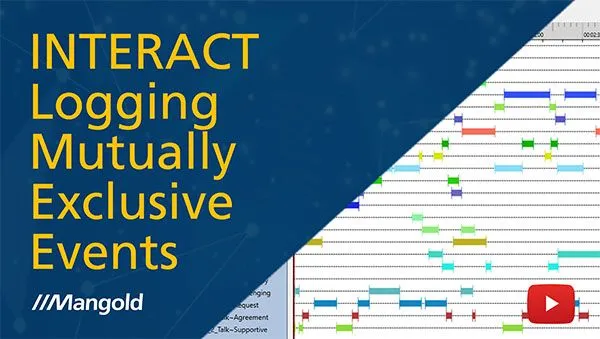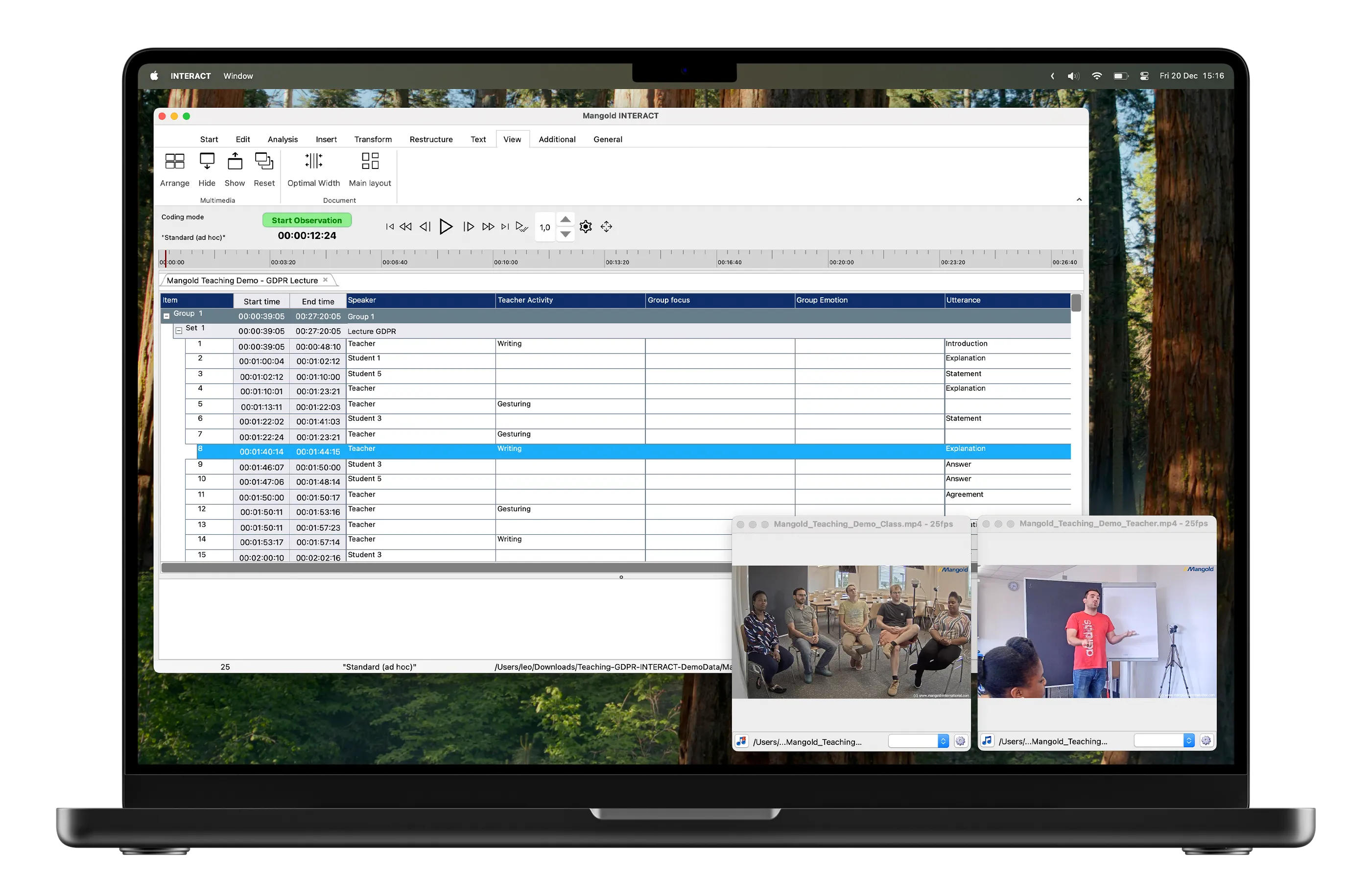Tutorial · 2 min read
Logging Mutually Exclusive Codes in INTERACT
Learn how to efficiently log mutually exclusive codes in INTERACT for comprehensive behavioral analysis without overlapping events.

Understanding how to properly log mutually exclusive codes is essential for accurate behavioral research analysis. This tutorial demonstrates how to implement and work with mutually exclusive codes in INTERACT, ensuring comprehensive coverage of observed behaviors without overlapping events. Whether you’re studying gaze direction, body postures, or other behavioral patterns, this guide will help you maintain data integrity through proper coding practices.
What You’ll Learn
- Configure codes to be mutually exclusive using the exclusion list
- Implement exhaustive coding without time gaps
- Navigate the coding interface efficiently
- Transform existing data into mutually exclusive formats
- Combine exclusive and non-exclusive codes effectively
Tutorial Overview
Mutually exclusive coding is a fundamental concept in behavioral research where certain behaviors cannot occur simultaneously. This tutorial builds upon basic event logging knowledge, using gaze direction as a practical example to demonstrate mutually exclusive coding techniques in INTERACT.
The process begins with setting up your code definitions and adding an exclusion list identifier in the ‘Excl’ (Exclusion) column. This simple yet powerful feature ensures that when one code is active, no other code from the same exclusion list can be active simultaneously. The tutorial emphasizes the importance of continuous coding by including additional codes such as “eyes closed” and “not visible” to ensure that there are no gaps in the observation timeline.
One of the key advantages of mutually exclusive coding is its efficiency during the observation process. Instead of manually closing one event before starting another, clicking a new code automatically terminates the previous one. This streamlined approach not only saves time but also reduces the likelihood of coding errors and icorrect overlaps. It is even possible to use mulitple exclusion lists in one coding pass, creating multiple exhaustive strings of Events.
For researchers working with existing data, INTERACT provides tools to transform non-exhaustive data into mutually exclusive formats. The “Add Missing Codes Make Exhaustive” command helps ensure complete coverage of the observation period, while the “Remove Overlaps” command automatically adjusts end times to avoid overlapping with subsequent start times, making your data more suitable for certain statistical analyses.
INTERACT: One Software for Your Entire Research Workflow
From data collection to analysis—including GSEQ integration—INTERACT has you covered.
